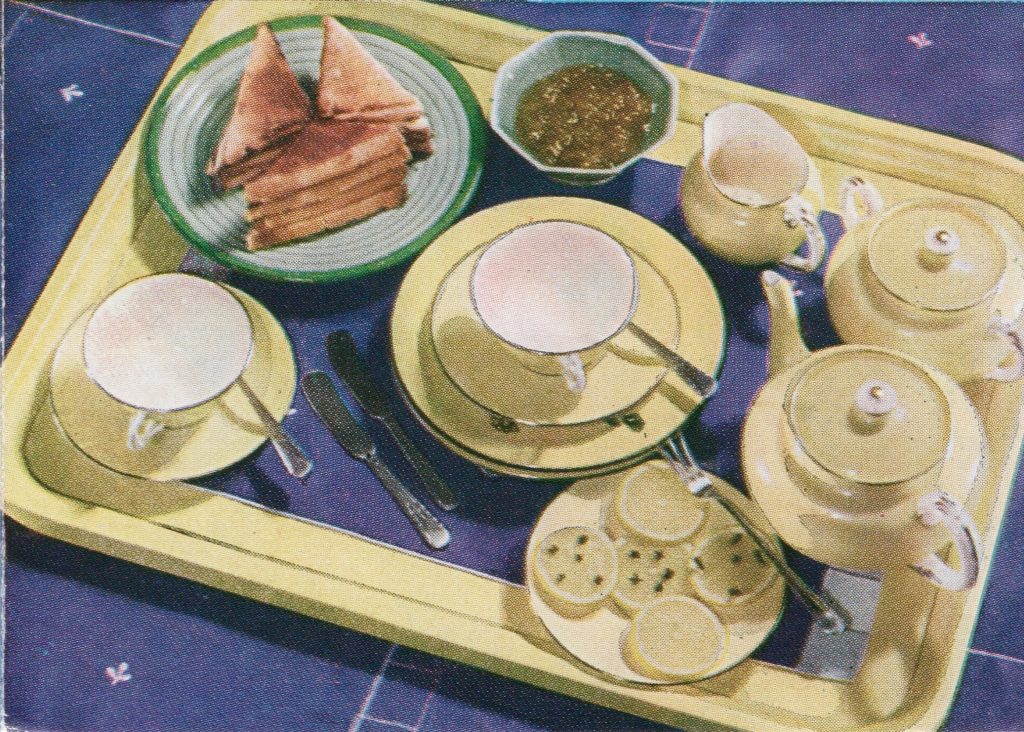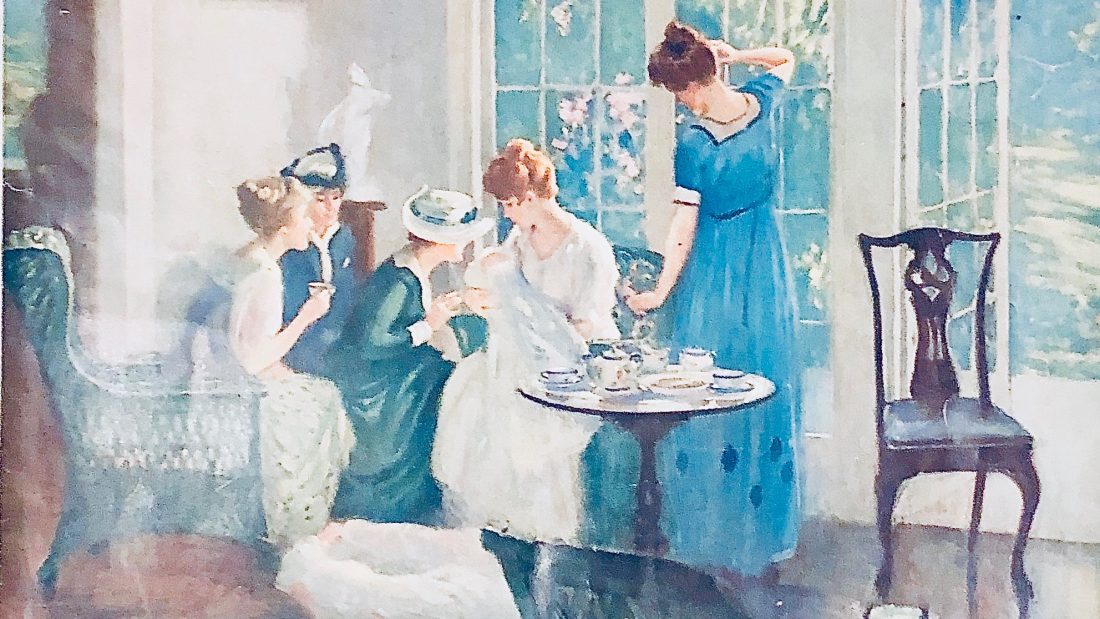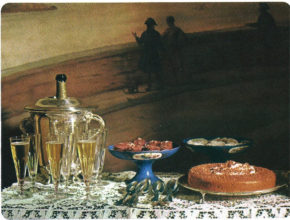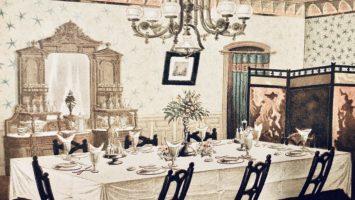“For simple and informal entertainment among women, afternoon tea is a delightful change from the usual luncheons. It may be served to entertain two or three friends, or it may be so arranged that a large number of persons may be entertained in a small space and a comparatively short time.”
Entertaining Guest Etiquette / Children’s Parties, By the Woman’s Institute Library of Cookery (1929)
Some people like to begin talking about dining etiquette by breaking down the formal table. I understand the idea that if you begin there, everything else will be easy. But to be honest, I think that’s daunting and when was the last time you went to a truly formal dinner?
I prefer to begin with tea. Tea can be the simplest of meals. It can also be incredibly complicated, but at its heart it is the perfect meal to discuss etiquette because its history is all about friendship and loveliness.
Historically, it is said that the seventh Duchess of Bedford originated afternoon tea in England in the 19thcentury. After a heavy breakfast and during her long wait until dinner, she lagged at four and so drank tea and ate a small meal of cakes and sandwiches. Now, I tend to find these sorts of stories fanciful, though this one has some anecdotal evidence. Letters written by guests about the Duchess’ all-female tea breaks corroborate that she did take an afternoon tea break. Some imply that the tea drinking was secretive. So, what am I skeptical about? Well, many people back then ate two main meals, and I’m sure lots of people took some sort of light snack during the late afternoon to avoid becoming hangry. There was the ubiquitous biscuit jar in the bedroom just so that the peckish could snack on cookies when they wanted. In France ladies had been gathering together to take hot chocolate with nibbly bits since the mid 1700s. It is likely that other women were doing the same thing but were less written about, and if the practice was a bit secretive, it’s even more likely anyone else doing the same kept it quiet. I suppose I question stories that are invariably about a single person, usually upper class, and describe a “eureka” moment. I find this to be untrustworthy history, but alas, it’s the story we have.
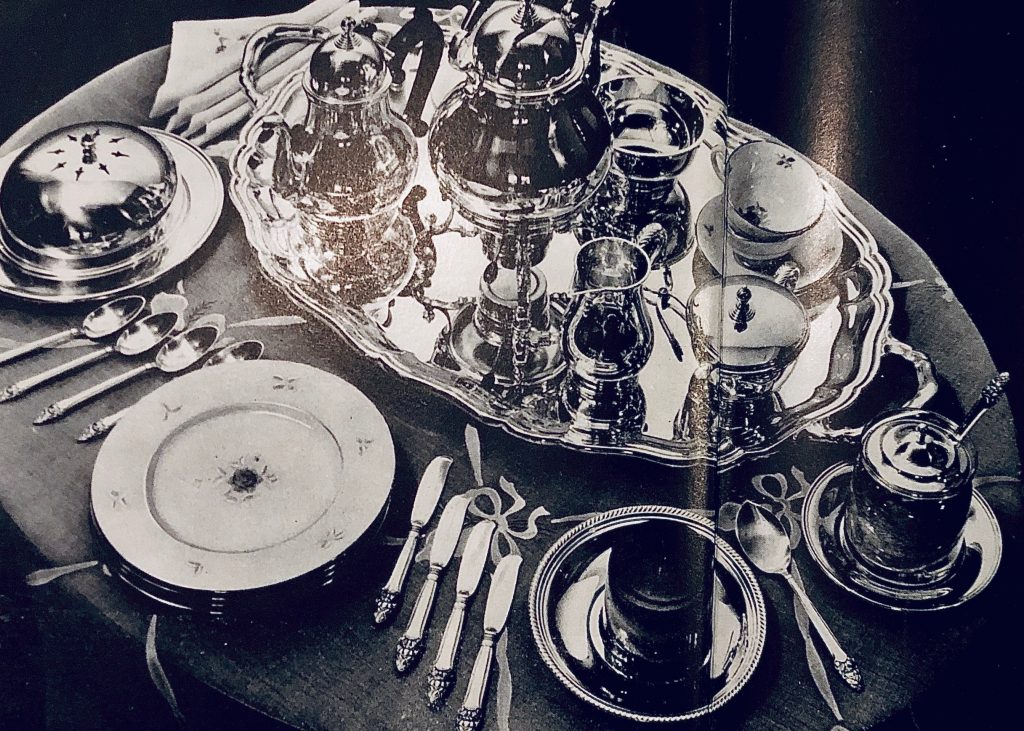
The Georgian middle class really took up tea. Ladies were able to invite other women over to entertain unchaperoned by men and It must have been a great liberation. There was also an air of ritual about it. The woman who gave the tea had a boiling pot of water on the table, which allowed her to make the tea in front of her guests. This began as a custom because tea was so expensive, one would never trust a servants to make it where they couldn’t be seen, but like most customs, the practical reason soon became lost to the performance. Here was a chance for the lady of the house to show her guests how refined she was by the grace with which she made and served the tea. And here was a chance for a family to show off how prosperous they were by parading a bunch of expensive tea paraphernalia in front of their acquaintances. The ability to make a good pot of tea would mark you out as one who had the money to have made many pots before. All that middle-class social aspiration became concentrated in the performance as hostess.
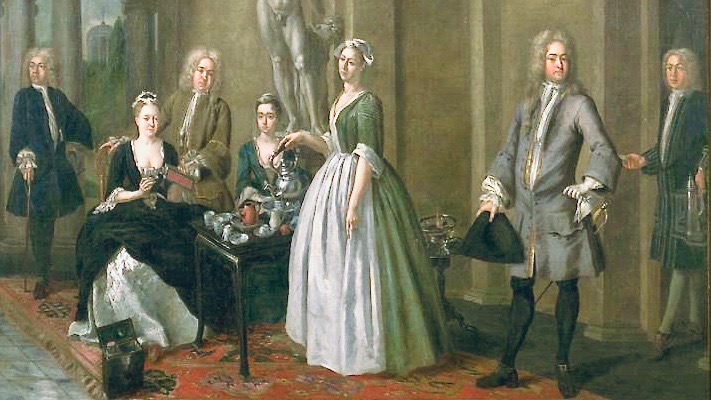
“A “Tea” means anything, from the little flower-bedecked table in the corner of the drawing-room, where a gracious woman dispenses Russian tea and bright talk at the same time, to the more pretentious entertainment, which introduces the young daughter of the house to Society, and she “receives” for the first time with her mother.”
Table Talk Magazine, February 1893
As in the past, tea can be a statement or a casual invite to friends, either way the general principals remain the same.
So, what do you need for an informal or casual tea? The simplest answer is a good pot of tea, light sandwiches, something sweet and a friend to share it with. Don’t feel like you have to bake or make a big fuss. If we always waited for when we had the time, few of us would ever have anyone over. If the conversation is good, tea with cookies from a box are fine, (I’ve never said no to a Milano).
The more spectacular, formal tea, I’ll cover in a later post.
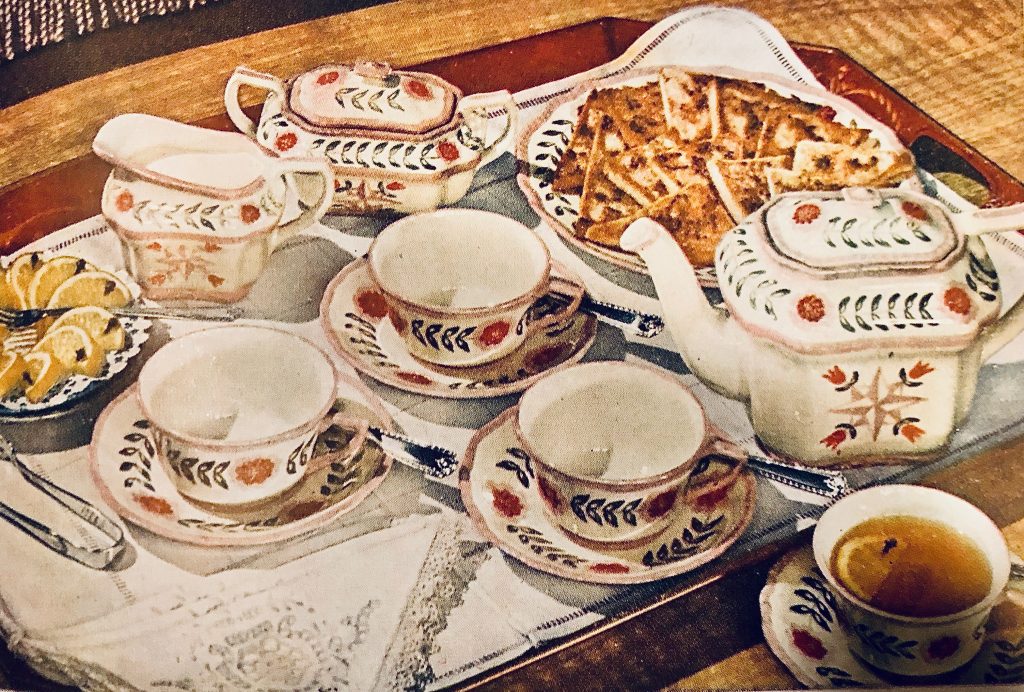
“For the informal tea, you will need a teapot, sugar bowl and creamer, either in silver or in fine china, and a hot water kettle with an electric or alcohol lamp beneath it in order to keep the water hot. These all stand on the tray. The lamp, for safely’s sake, often has an additional small tray below it, with the cups grouped about them. the handles of the cups should all be turned in the same direction, parallel with the teaspoons lying in each saucer. The cups should never be stacked. If there is not room enough for all of them upon the tray, some may stand beside it or on another smaller table near at hand.”
The Complete Book of Table Setting by Amelia Leavitt Hill, 1949
Apparently, the word informal in 1949 meant something different than it does today!
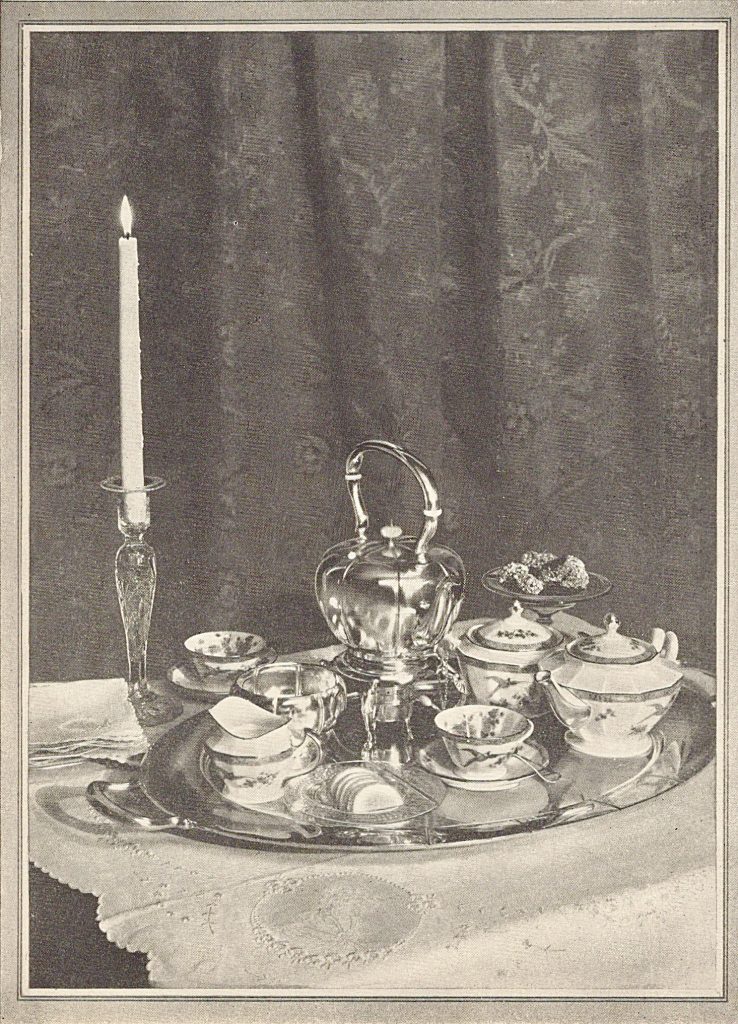
The tea pot part is simple. Tea pots are made in every style from plain crockery to ornate sterling silver. You can find lovely ones everywhere including thrift stores for practically nothing. You can serve the tea in mugs, but the snobs will frown. Tea cups come at all price points, so if you want to invite people over to tea, buy a couple. Nothing needs to match, though when starting out, it’s best to stick to a single era, color scheme or theme. Florals or art deco, McCoy brown pottery or Japanese cups, they all are lovely, but stick to one style unless you’re one of those people with a perfect artistic eye.
Now I’m going to say something that may sound odd – I don’t think there’s anything wrong with entertaining with your best stuff, even for a simple tea with a good friend. If you’re doing it just to show off, well, it probably won’t come off, but if you’re trying to create a beautiful environment that will please your guest and transport her or him to a more civilized time, they will probably love it. When my girlfriends come over for tea, I think it’s a statement of my love for them to pull out the silver and the china even if I’m serving store bought treats. They deserve the world and that includes a little extra washing up on my part.
I like the instructions served up in Etiquette and Entertaining by Lady Troubridge, (1939):
“First of all, the cloth. Not too lacy or too heavily trimmed. Cloths in gay yet pale colors are what fashion decrees nowadays. Then the tray on which stands the tea-equipage itself, and most likely the cups and saucers as well, if there is room. This may range from solid silver to dainty flowered paper mâché affair, according to the style of the household, (silver needs cleaning expertly to look its best) or a tray can be dispensed with altogether, and a little encampment of teapot, hot-water jug and milk jug, arranged before the hostess, each standing on a small mat to prevent the heat marking the table or drips reaching the immaculate tablecloth. So now we have the table set, with cups and saucers ranged to the right hand of the pourer, and the rest of the table occupied with plates of brown and white bread-and-butter (not rolled, this fashion has gone out), and a plate of savory sandwiches, likewise a cake, home-made for preference, and one place of smaller iced cakes, shortbread biscuits or any small variety of cake.”
This is a lovely and relatively simple tea: Tablecloth, tray, teapot, cups and saucers, hot water jug, milk jug or pitcher and food.
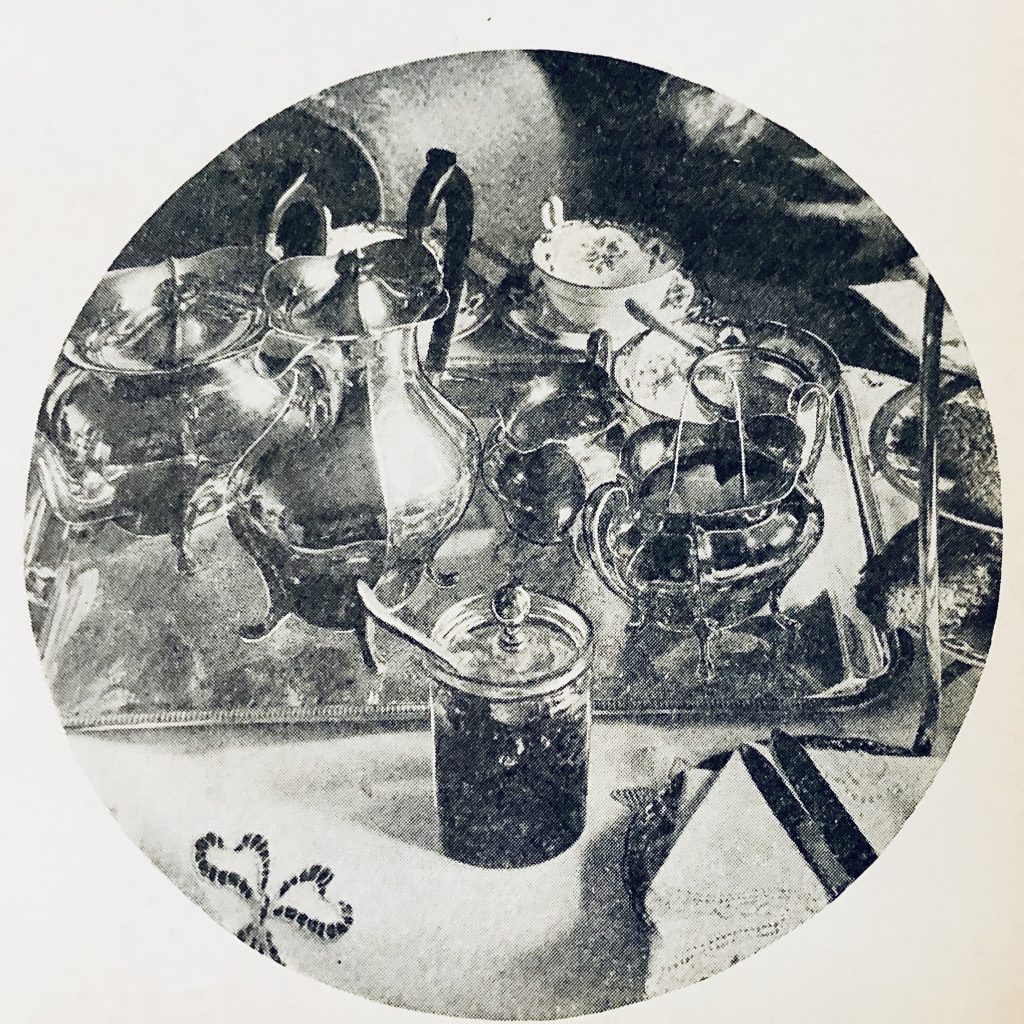
So what else do you need to know? Well, how to make a pot of tea I suppose…
Rinse your kettle and start with fresh cold tap water, (cold really shouldn’t matter anymore given the cleanliness of most city water today but snobs will say they can taste the difference). Bring your teapot to the kettle. Bring the kettle to the first boil and then lower the heat – over boiling will make the tea taste flat. Rinse the tea pot out with the water. Add one teaspoon of tea per cup, (or one teabag per cup). Fill the teapot with water gently.
I’m loathe to tell anyone what to do, but really you should not put cream into a tea. Use milk, cream is too heavy. Snob alert! Snobs will look down on you if you put the milk in first. I’m sure you’ve all heard it before, but historically, lower classes put the milk in first to ensure that their cheap crockery didn’t shatter because of the heat of the water. Richer people poured milk in second because their fine porcelain could withstand the heat. If you’re like me and couldn’t give a poop about such things, you may still want to put milk in second so that you can judge how much to put in.
Couple of tips: Lemon is never used with milk, it curdles it. Pottery tea pots lose heat faster than porcelain. Tea cozies can make tea bitter if you leave them on too long.

As for food, Ms. Hill admonishes us to keep it simple!
“At this sort of informal tea, refreshments should be keynoted by simplicity. You are not supposed to require a knife or fork, and should not be given food that makes them necessary. thin bread and butter is conventional, perhaps accompanied by cinnamon toast. The most “fancy” dish that should even be thought of is plain unfrosted pound cake, served in finger-tip strips. By the way, this is the only form of afternoon tea at which hot bread is served. Tea biscuits or English muffins, ready-buttered, are an excellent choice.”
I’ll get into the the foods of tea later on, but suffice it to say you should serve what you like and what your guests will enjoy. The one lesson I would take from Ms. Hill is to not feel as if you have to bake up a storm or be bougie. You are perfectly correct to do the minimum! A good friend and good conversation is really all you need.
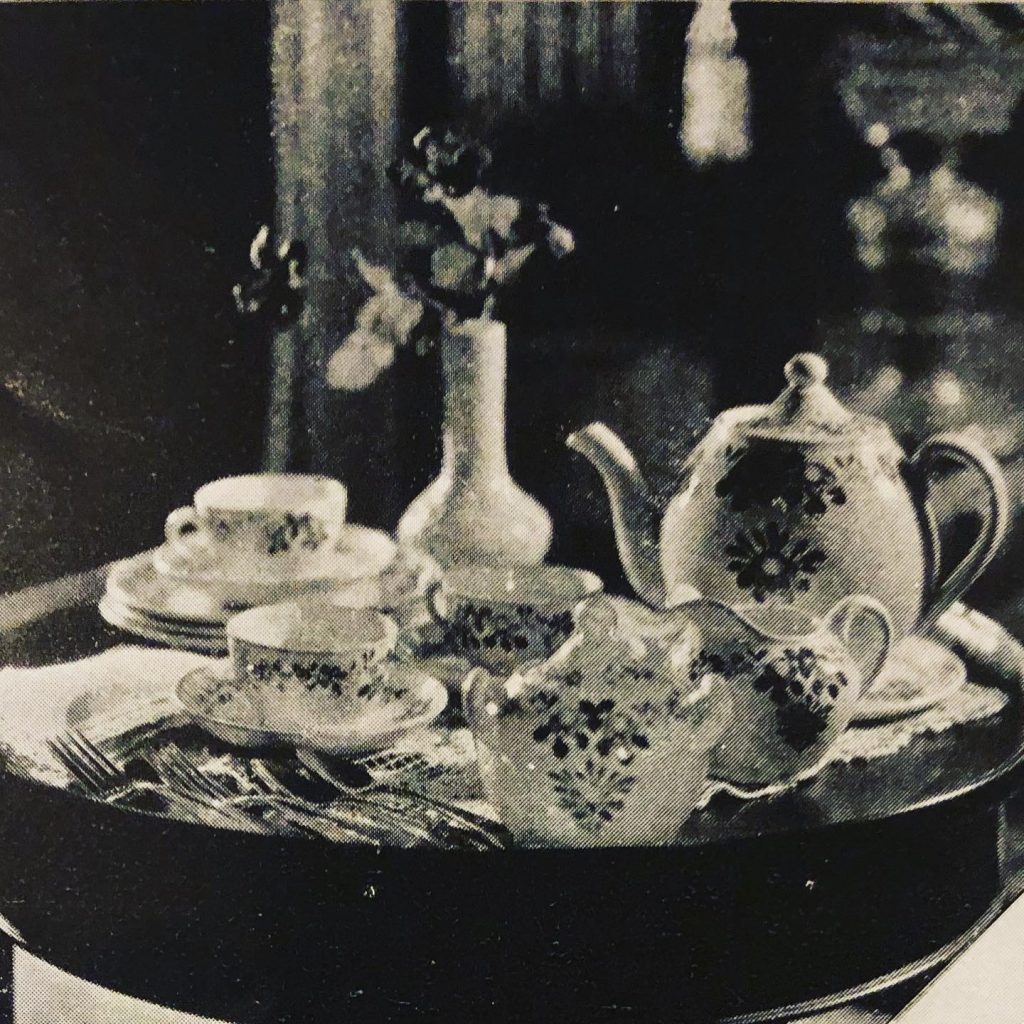
Iced tea is an American tradition. If it’s hot, try an afternoon tea where the drinks are iced. Just make sure to have unsweetened and sweet tea. The reason for pre-sweetened tea is that sugar will not dissolve in a cold drink, it will just drop to the bottom of the glass. If you want to give people the choice of how sweet they want their tea, have a little jug of simple syrup at hand. For a gathering with iced tea, the food remains generally the same, though it’s fun to switch it up with some American favorites, such as mini cobblers or hand pies.
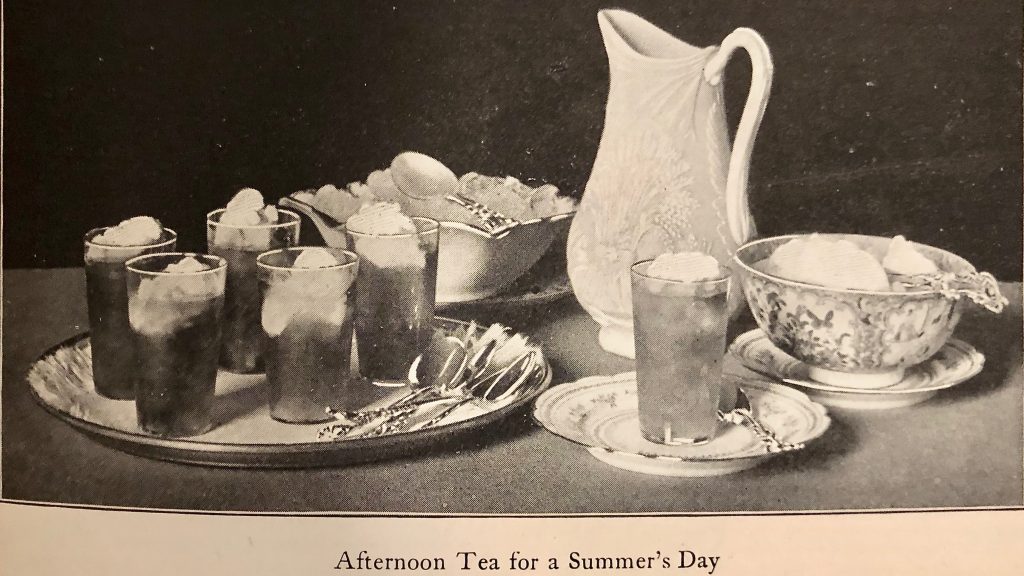
Quick Tip: Iced tea can be cloudy after it’s been in the refrigerator. You can microwave it for a minute until clear then put it over ice. This should not alter the taste of the iced tea.
When it comes to inviting multiple guests to an informal afternoon tea, notes used to be the norm.
“The invitation to a tea-party may be less formal. It may take the form of a friendly note, something in this manner: “Dear Miss Patterson.” “We have some friends coming to drink tea with us to-morrow: will you give us the pleasure of your company also. We hope you will not disappoint us.”
Decorum, 1880
Now you can feel free to email or text. This is the most unpretentious way of entertaining, so keep it low key.

What to wear? For a casual tea, wear what you’d normally wear when you see a friend. For an informal tea with a couple of friends, you’re expected to make an effort, but that just means to look presentable.
Last little tidbit: in Decorum, the author states, “One should always say “drink tea,” not “take tea,” which is a vulgarism.” Oh, for the days when there were still things that could be considered vulgarisms.
I’m going to get into the etiquette minutia of Tea next, from High Tea to the tea reception, the tea dance and tea service.
